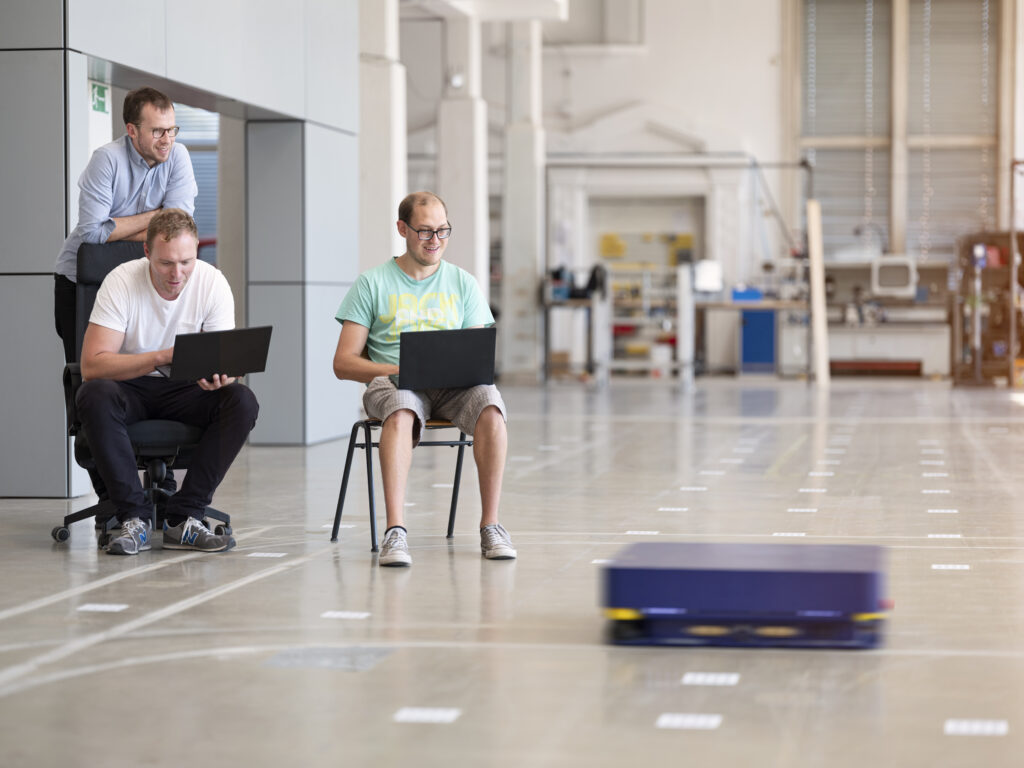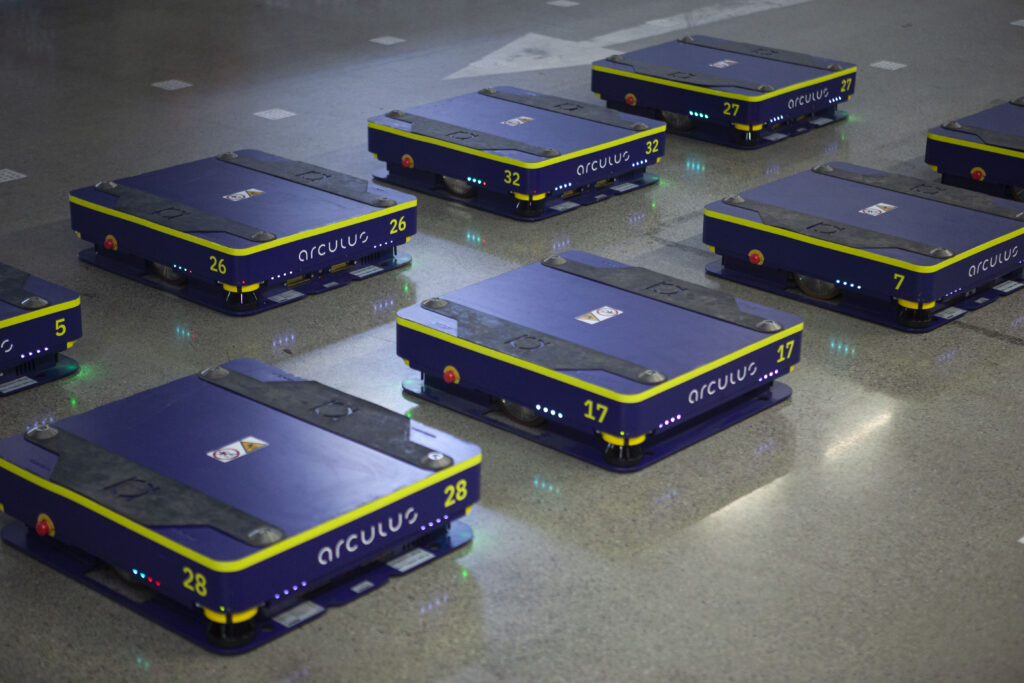This is part 2 of the arculee story. If you haven’t yet read part 1, check it out here.

Two Sides of The Same Coin
With the arculee in hand, Audi not only backed up arculus’ vision but also became the first customer for the arculee 1.0. According to Fabian, with the trust and visibility of “a big and strong client,” the AMR received the push it needed to succeed in intralogistics. For him, this is one of the reasons for the arculee’s success.
Nonetheless, it also impacted the robot’s development in different ways. “Audi already had a project in planning that fit the idea of what arculus wanted to build”, explains Marius. The high expectations of a robust Original Equipment Manufacturer (OEM) guided the flexibility and scalability of the product from the beginning of its development. So we had to develop a safe and solid solution for a global player that also strictly met European standards and directives.
Hannes Bell (Project Manager) adds that the initial design of the arculee was iterated several times to meet the requirements of Audi’s facilities. “The size of the AMR; the width, length, and height were then defined by the trolleys that Audi was using in their facilities to carry containers. So the goal was to build a robot that could fit underneath those trolleys to carry them around”.

For six years, the initial concept has remained the same. “I think a large part of the initial assumptions we had back in those days about robots or fleet management are still intact and focused”, says Fabian. Now, with the acquisition of arculus by Jungheinrich in 2021, the arculee has become even more intralogistics-centric.
The New AMR Era
The applications of arculee have also evolved. For example, the earliest idea of the AMR came from the trolley-based application, and its design required a low height. However, the design and tallness were then customized for the first project – Supermarket 2.0 – which aimed to improve the overall commissioning process in the Audi supermarkets. “The basic idea of the robot is still that it is carrying something on top.”, explains Hannes. “But, of course, in terms of assembly, quality, and functionality, it has improved a lot since the first version”, he adds.
The development of the arculee over these years has taught many lessons. “The devil is in the detail” is how Marius sums it up. For him, there is no room for error. But if it happens, it needs to be fixed at an early stage. This means keeping the product and the process simple and robust to ultimately reduce the chances of system failures due to complexity.
“If you make an error you can not detect in the beginning, the impact is bigger. Therefore, it’s good to have proper concepts, talk about them with everyone, and let them thoroughly review those concepts. Try not to make the next generation or the next version of a robot until the mistakes are fixed”.
Marius Leffler
Like Marius, Fabian explains that mastering different layers allowed them to react sooner to situations. “You’re responsible for everything. If anything fails, then it’s your fault. But on the other hand, you can react much faster because you don’t need to try to understand what others might have thought when designing”, he explains.
Here and now
Today the arculee evolved to the next generation, internally called Version 2.0, which is, in fact, more than just a product. The arculee is developed from the core like a platform based on all the developments we have done since 2016. We can now build the robot in different forms in a shorter time frame. “Now, if we want to build robots that can carry a larger load, let’s say two and a half tonnes, we can do that in a shorter time … because we already have the technology for that. It’s just a matter of building mechanics, putting in place the existing electronics, and scaling it”, expresses Iuri Ferreira (Senior Software Engineer).
With every new arculee shipped, the customer also receives a highly integrated and connected driving computing power with a lot of sensors. The team around Max Stähr (Head of Robotics) is able to add new functionalities to the robot, even if it is already on-site. Enabled through a proprietary OTA infrastructure, every arculee can grow in its functionality over time. With each new customer project, the functions team gathers new insights and data from the field. They can then use these data to develop or improve new functions.